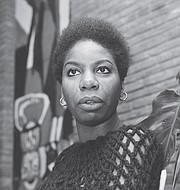Thursday, June 8, 2023
In 1941, in his early 70s, after an extraordinary career and a dozen years before his death at 84, the brilliant French artist Henri Matisse underwent surgery following a diagnosis of abdominal cancer. He was left bed- and chair-ridden. Sculpturing and painting were now too physically challenging.
With the help of assistants, Matisse returned to paper collages or decoupage, a medium he previously employed decades before.
“He would cut sheets of paper, pre-painted with gouache by his assistants, into shapes of varying colors and sizes, and arrange them to form lively compositions. Initially, these pieces were modest in size, but eventually transformed into murals or room-sized works. The result was a distinct and dimensional complexity—an art form that was not quite painting, but not quite sculpture.”
With his new use of this technique Matisse observed: “An artist must never be a prisoner of himself, prisoner of a style, prisoner of a reputation, prisoner of success. …” Essentially, artists and human beings in general must be open to conversion and transformation – open to growth.
Handicapped then liberated by his new limitation, Matisse gave full flight to his imagination in the design for the Chapelle du Rosaire de Vence (Chapel of the Rosary).
The chapel, built for Dominican nuns, is found in Vence, a town on the French Riviera. Matisse regarded it as one of his masterpieces. It is a monument to the human capacity for growth and change at any stage of life.
Preparatory schools run by the Roman Catholic Society of Jesus, the Jesuits, have a profile of what they desire of graduates from high school as they prepare for the rest of their life journey. A primary characteristic is: Open to Growth.
Walsh Jesuit High School in the United States is typical:
“The Walsh Jesuit High School student at the time of graduation has matured as a person — emotionally, intellectually, physically, socially, religiously — to a level that reflects some intentional responsibility for one’s own growth. The graduate is beginning to reach out in his or her development, seeking opportunities to stretch one’s mind, imagination, feelings, and religious consciousness.”
Just in his mid-30s, Jorge Mario Bergoglio became Jesuit Provincial in Argentina. By his own admission, the future Pope Francis came to such high leadership too young, too inexperienced, too immature in terms of understanding the need to balance the active exercise and restraint of power, something many young leaders often get wrong.
Though popular and well-liked by many, Bergoglio was too dogmatic and authoritarian and alienated a number of fellow Jesuits. After his tenure as Provincial he was sidelined and essentially sent into a sort of exile in the more remote Argentinian city of Cordoba. It became a blessed exile.
Bergoglio’s time in Cordoba was one of deep reflection and purgation in which he faced one of life’s greatest struggles: a true reckoning of who one is as a human being with one’s gifts and talents, as well as weaknesses, patterns of sin, and often paralyzing flaws.
Though often said to be melancholic and even at times depressed during this period, Bergoglio found a deeper interior freedom, a deeper openness to growth that is the precursor to human transformation.
He did not become paralysed by his failures nor did he succumb to the temptation to excuse them with all manner of rationalizations and the suppression of the truth about himself.
By the time he became Auxiliary Bishop of Buenos Aires, Bergoglio’s conversion was bearing deeper fruits. He became more collegial, a better listener, more discerning, more empathetic, more open to dialogue and more committed to solidarity with and greater service to the poor and those suffering injustice.
The mercy of God that he found in Cordoba, is the mercy he demonstrates and preaches as Pope. In his new ministry, Bergoglio seems to be seeking redemption before God and others for his own admitted sins and failures, reconciling with himself in his remaining years, however long they may be. The papacy has further transformed Francis, who remains open to growth at 86, still undergoing conversion.
Eunice Waymon was born in the southern United States in 1933, an African American child who early experienced the vicious sting of racism pervasive in American society. At a young age, her extraordinary musical talent was encouraged through training in classical piano.
Her family moved north so she could develop her talent. To help pay expenses, Eunice took a job at an Atlantic City nightclub. The owner was impressed by her skills and range at the piano.
But this was a nightclub and he needed her to sing. Though untrained as a singer, she began singing popular tunes to which she brought what would be her signature voice and expression.
It was but one of the many moments in her life when she would be open to the new possibilities which often lie undiscovered or untapped or unmotivated.
Because she was from a deeply religious household Eunice did not want her mother to know that she was singing in a nightclub. So for advertising purposes she called herself Nina Simone.
Nina Simone was one of the more brilliant and soulful artists of her generation as conversant at the piano with Bach as with the Blues. With training from the Julliard School of Music, she was a fine classical pianist with a vocal range that also made her one of the greatest vocalists of her generation.
She was transformed by the civil rights movement, lending her voice and her anger to the fight for racial equality. Though often brutalized by domestic abuse, racism and sexism, and often paralysed by what would later in her life be diagnosed as a bipolar disorder and depression, Eunice Waymon continued to transform herself into an extraordinary artist.
Being open to growth is not fundamentally about one’s age. There are young people who, as they grow older, remain essentially the same, with seemingly little capacity to discover new lands or vistas within the geography of their own imagination or soul.
Then there are flights of the imagination and willpower by people like Mohandas Gandhi, the prophet of nonviolence and Indian independence leader, who claimed that one of his greatest achievements was mastery of his appetites and habits.
There is today a fetish of youth which deems that youth is to be preferred in various areas of national life, such as politics, as an end in itself.
Politics demands new energy and youthful voices. But it also requires experience and the wisdom born of failure and mistakes by those who as they age offer life lessons those too young have yet to fully learn.
Yet longevity does not necessarily translate into wisdom and many who lived long years often evince an incapacity for growth.
What Matisse said of artists –“An artist must never be a prisoner of himself, prisoner of a style, prisoner of a reputation, prisoner of success.” – resonates for all of human being and development.
Growth and conversion are life-long adventures and are essential for interior freedom, as possible in a young Bahamian artist in her 20s as much as in an octogenarian pope, who, after having submitted his retirement letter as Archbishop of Buenos Aires, was summoned from the ends of the earth for one his greatest life challenges: to reform and renew a more than 2000-year-old institution.

